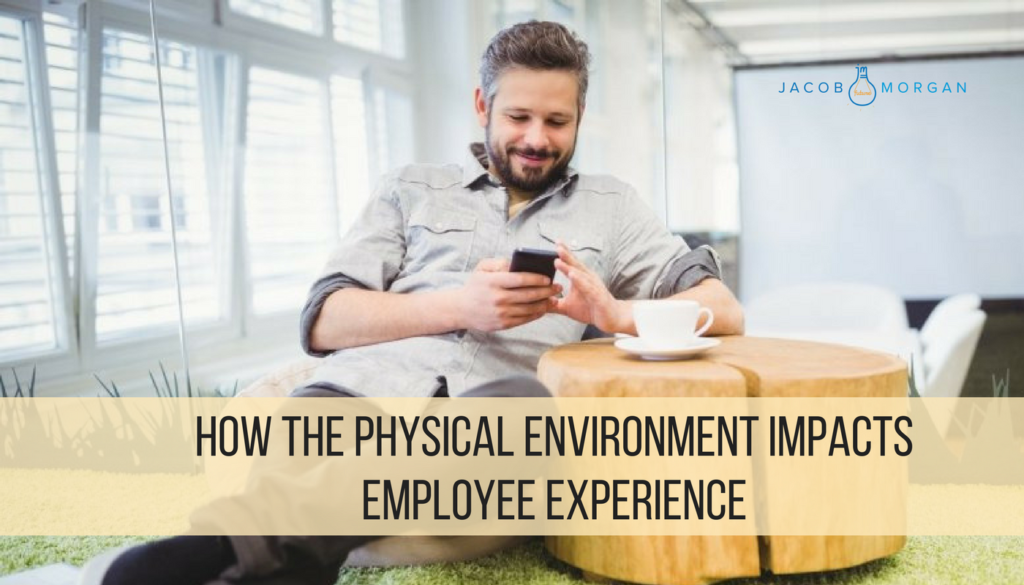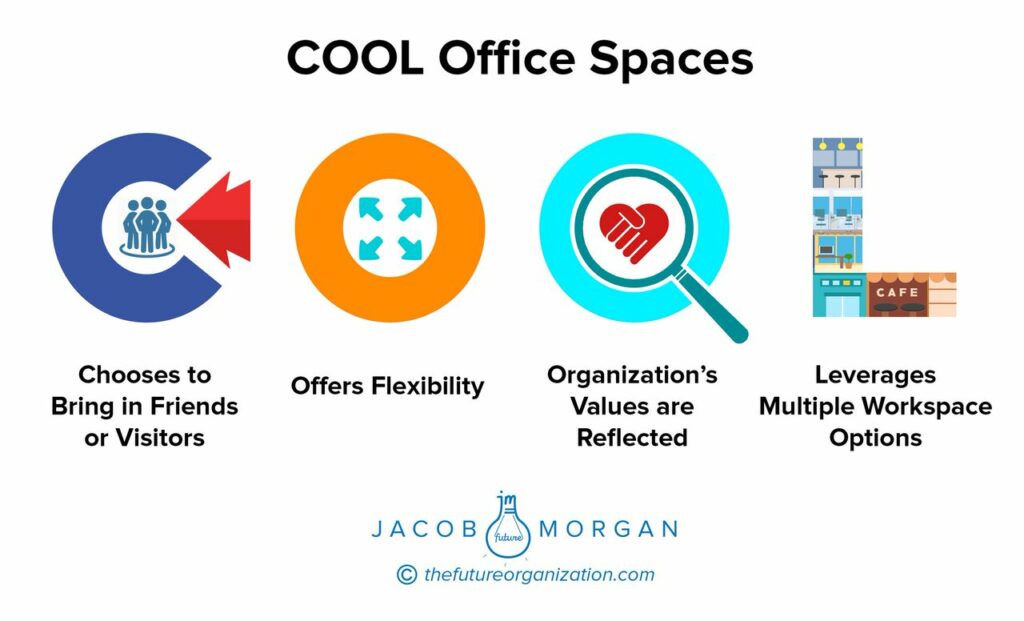
There are three key environments that make up the employee experience: technology, culture, and the physical space. I explore all three in my latest book, but let’s talk about the physical space, or the place where employees actually work. This is our surroundings and includes everything from the art that hangs on the wall to the catered meals the organization may offer to the cubicles or open floor plan employees may sit in. It comprises 30% of the employee experience. It’s no secret why our physical space matters: we all want to spend our workdays in environments that energize and inspire us. These types of workspaces help us feel more creative, engaged, and connected to the company we work for. Not only that, but the physical environments also act as symbols that represent the organization and our decision to be there. Great physical environments act as positive symbols and representations; poor physical spaces act as negative ones. This was first discovered by Edgar Schein, a former professor at the MIT Sloan School of Management and author of the book Organizational Culture and Leadership. In this book he talks about the three levels of organizational culture, which are artifacts, values, and assumptions. According to Schein, all three of these things must align. There are a lot of parallels between these three levels and the three areas of employee experience.
Interestingly enough, with the rise of co-working locations, global connectivity, and collaboration technologies, many people believe that offices are going to die. This is only somewhat true. The traditional idea of an office is indeed on its way out–the one with gray walls, brown carpets, and lines of cubicles. However, the buildings themselves are going through a bit of an office design renaissance, and instead of disappearing, offices are reemerging as employee experience centers. According to commercial real estate firm CBRE, commercial real estate in the U.S. is at a seven-year high, and organizations such as Amazon, Cisco, Samsung, Whirlpool, GE, Schneider Electric, Deloitte, Microsoft, LinkedIn, and many others are investing millions of dollars into creating these employee experience centers, for a very good reason. As the world of work continues to evolve and change, so do the environments in which the world actually gets done.
It’s like redesigning a car by upgrading the engine and leaving the interior the same–it might be more powerful, but if it’s not pleasant to spend time in, you won’t want to drive it! A recent study by furniture manufacturer Steelcase found that nearly 90% of workers around the world are less than satisfied with their work environments, which means there is a lot of room for improvement.
A study from 2010 in British Journal of Management found that there is a social identity that employees have with their workspaces, and the physical environment can affect the psychological comfort of the employees who work there.
To create a great physical environment for employees, organizations need to focus on the following major characteristics, which are abbreviated as COOL:

• Chooses to bring in friends and visitors
• Offers flexibility
• Organizations’ values are reflected
• Leverages multiple workspace options
By focusing on these areas, which we’ll look at more in-depth in future articles, organizations can create a physical environment that represents employees and encourages them to get involved and do their best work.



